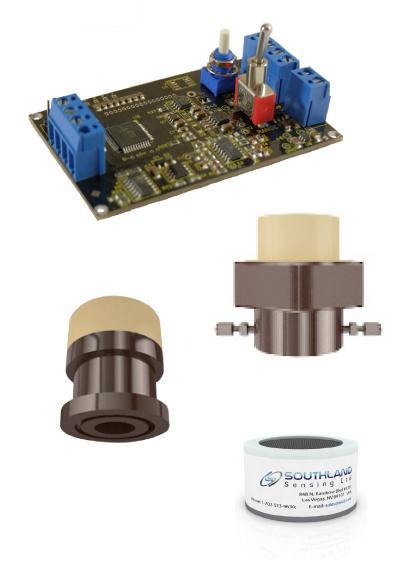7.30-8.1 全数会2025(第六届)机器人及智能工厂展
火热报名中>>
C++之类的继承关系学习总结(一)
一、类的组合关系:
1、整体与部分的关系
组合关系,从字面上来理解的话,就是谁也离不开谁,必须相互组合在一起才行,例如我们生活当中的电脑组成:

代码示例:
#include <iostream>
#include <string>
using namespace std;
class Memory
{
public:
Memory()
{
cout << "Memory()" << endl;
}
~Memory()
{
cout << "~Memory()" << endl;
}
};
class Disk
{
public:
Disk()
{
cout << "Disk()" << endl;
}
~Disk()
{
cout << "~Disk()" << endl;
}
};
class CPU
{
public:
CPU()
{
cout << "CPU()" << endl;
}
~CPU()
{
cout << "~CPU()" << endl;
}
};
class MainBoard
{
public:
MainBoard()
{
cout << "MainBoard()" << endl;
}
~MainBoard()
{
cout << "~MainBoard()" << endl;
}
};
class Computer // 这个地方不仅描述了事物,也还描述了关系,里面只要有一个类不存在,电脑这个类也就不复存在了。
{
Memory mMem;
Disk mDisk;
CPU mCPU;
MainBoard mMainBoard;
public:
Computer()// 这里会先调用类成员的构造函数,之后调用电脑类的构造函数,这说明了组合关系;电脑类对象的创建,要依赖上述四个类的对象的创建。
{
cout << "Computer()" << endl;
}
void power()
{
cout << "power()" << endl;
}
void reset()
{
cout << "reset()" << endl;
}
~Computer()// 电脑类析构的时候,也会将对应的类成员析构,这说明同生死;说明了电脑类对象的存在完全依赖于类成员对象的存在。
{
{
cout << "~Computer()" << endl;
}
};
int main()
{
Computer c;
return 0;
}
运行结果:
root@txp-virtual-machine:/home/txp# ./a.out
Memory()
Disk()
CPU()
MainBoard()
Computer()
~Computer()
~MainBoard()
~CPU()
~Disk()
~Memory()
2、组合关系的特点:
将其它类的对象作为当前类的成员使用
当前类的对象与成员对象的生命周期相同
成员对象在用法上与普通对象完全一致
二、类的继承关系:
说到这个继承,你可以把它类比成生活当中的父亲和儿子,儿子继承的父亲的长相特征。那么在我们面向对象中继的承又是指什么呢?
1、面向对象中的继承是指类之间的父子关系
子类拥有父类的所有属性和行为
子类就是一种特殊的父类
子类对象可以当作父类对象使用
子类中可以添加父类中没有的方法和属性
2、继承代码描述形式:
class Parent
{
int mv;
public:
void method()
{
}
};
class Child : public Parent//描述继承关系
{
};
代码示例:
#include <iostream>
#include <string>
using namespace std;
class Parent
{
int mv;
public:
Parent()
{
cout << "Parent()" << endl;
mv = 100;
}
void method()
{
cout << "mv = " << mv << endl;
}
};
class Child : public Parent
{
public:
void hello()
{
cout << "I'm Child calss!" << endl;
}
};
int main()
{
Child c;
c.hello();
c.method();
return 0;
}
运行结果:
root@txp-virtual-machine:/home/txp# ./a.out
Parent()
I'm Child class!
mv= 10
3、继承规则:
子类就是一个特殊的父类
子类对象可以直接初始化父类对象
子类对象可以直接赋值给父类对象
说明:继承是c++中代码复用的重要手段。通过继承,可以获得父类的所有功能,并且可以在子类中重写已有的功能,或者添加新功能。
代码示例:
#include <iostream>
#include <string>
using namespace std;
class Memory
{
public:
Memory()
{
cout << "Memory()" << endl;
}
~Memory()
{
cout << "~Memory()" << endl;
}
};
class Disk
{
public:
Disk()
{
cout << "Disk()" << endl;
}
~Disk()
{
cout << "~Disk()" << endl;
}
};
class CPU
{
public:
CPU()
{
cout << "CPU()" << endl;
}
~CPU()
{
cout << "~CPU()" << endl;
}
};
class MainBoard
{
public:
MainBoard()
{
cout << "MainBoard()" << endl;
}
~MainBoard()
{
cout << "~MainBoard()" << endl;
}
};
class Computer
{
Memory mMem;
Disk mDisk;
CPU mCPU;
MainBoard mMainBoard;
public:
Computer()
{
cout << "Computer()" << endl;
}
void power()
{
cout << "power()" << endl;
}
void reset()
{
cout << "reset()" << endl;
}
~Computer()
{
cout << "~Computer()" << endl;
}
};
class HPBook : public Computer
{
string mOS;
public:
HPBook()
{
mOS = "Windows 8";
}
void install(string os)
{
mOS = os;
}
void OS()
{
cout << mOS << endl;
}
};
class MacBook : public Computer
{
public:
void OS()
{
cout << "Mac OS" << endl;
}
};
int main()
{
HPBook hp;
hp.power();
hp.install("Ubuntu 16.04 LTS");
hp.OS();
cout << endl;
MacBook mac;
mac.OS();
return 0;
}
运行结果:
root@txp-virtual-machine:/home/txp# ./a.out
Memory()
Disk()
CPU()
MainBoard()
Computer()
power()
Ubuntu 16.04 LTS
Memory()
Disk()
CPU()
MainBoard()
Computer()
Mac OS
~Computer()
~MainBoard()
~CPU()
~Disk()
~Memory()
~Computer()
~MainBoard()
~CPU()
~Disk()
~Memory()
4、小结:
继承是面向对象中类之间的一种关系
子类拥有父类的所有属性和行为
子类对象可以当作父类对象使用
子类中可以添加父类没有的方法和属性
继承是面向对象中代码复用的重要手段(换句话说,就是不要去写重复的代码,提高工作效率)
三、总结:
好了,今天的分享就到这里,如果文章中有错误或者不理解的地方,可以交流互动,一起进步。我是txp,下期见!

图片新闻
技术文库
最新活动更多
-
3月27日立即报名>> 【工程师系列】汽车电子技术在线大会
-
4月1日立即下载>> 【村田汽车】汽车E/E架构革新中,新智能座舱挑战的解决方案
-
即日-4.22立即报名>> 【在线会议】汽车腐蚀及防护的多物理场仿真
-
4月23日立即报名>> 【在线会议】研华嵌入式核心优势,以Edge AI驱动机器视觉升级
-
4月25日立即报名>> 【线下论坛】新唐科技2025新品发布会
-
4月30日立即参与 >> 【白皮书】研华机器视觉项目召集令
推荐专题









 分享
分享




















发表评论
请输入评论内容...
请输入评论/评论长度6~500个字
暂无评论
暂无评论